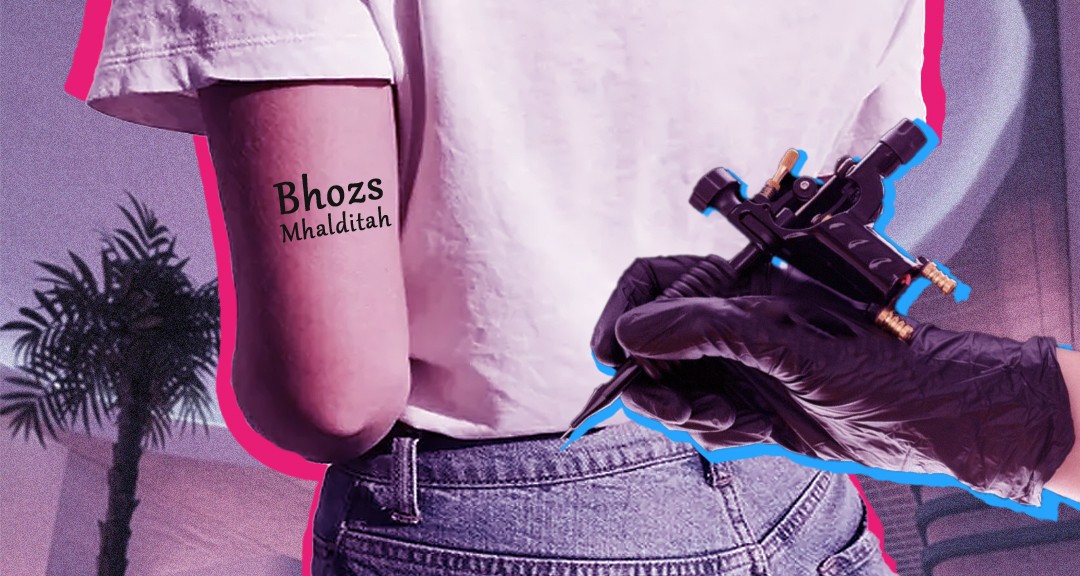So, you’re ready ready to get your first tattoo, huh? I mean, ready enough to actually start searching about it. You have come to the right place.
Here are some tips that won’t make the tattoo any less painful but help you break down the process of getting your first ever tatt to make things less intimidating and more exciting.
Before getting inked
1. The design
Chances are that if you are reading this article, you already have a folder full of pegs or a design in mind.
Getting this out of the way now: all tattoos fade with time. No matter how dark and precise your lines and colors may be after getting your tattoo, these will fade as time passes. Lines may blur and colors may dull out. It isn’t uncommon to get your tattoo retouched after a couple of years.
With this in mind, it may also be worth noting that some colors may show more on particular skin tones. But don’t let this dishearten you; if you find the right artist, they should be able to accommodate your design requests and give suggestions on how to make the design best stand out on you.
When deciding where to put your tattoo, you may want to think about how your design will look if that part of your body moves around, and how it will age with time. If you have a job where tattoos aren’t allowed, you may also want to think about what place will be easy to cover up when necessary.
In terms of pain, you will definitely feel the needle no matter where you place it. People have different pain tolerance levels, though there are some places notorious for being more painful tattoo spots than others. Pro tip: the more skin or the meatier that part of your body is, the less painful it will be.
2. Picking your artist and collaborating with them
Based on your design idea or pegs, try looking for an artist who specializes in the art style that you are interested in. Or maybe you know someone who could recommend an artist to you.
Most artists and studios have accounts online that showcase their pieces. Scour through the internet to find an artist whose work speaks to you. Try looking for pictures of their healed pieces. Healed tattoos look different from fresh tattoos. Looking at an artist’s healed tattoos can give you an idea of how their work ages over time.
Once you find an artist that you feel suits you, reach out to them—either by messaging their social media accounts or calling/texting the studio they work at. Send over your design pegs, the exact measurements of your tattoo size (preferably in inches), and your planned placement.
At this point, create an open dialogue with your artist. Feel free to discuss the specifics of your design and placement with them and be open to what they have to say. The artist is a professional after all. For example, a text design you want may need to be bigger than you planned so that the letters don’t merge as your tattoo fades over time. It is also possible that your artist will ask for a consultation visit to discuss your design in person.
If you have sensitive skin, you may want to ask your artist for an ink test to see whether or not you are allergic to the ink you are using. While this is a rare case, it may be better to be on the safe side. Informing your artist about any skin allergies you have can also help the artist adjust your tattoo design and aftercare procedure (plus products) to be better suited for you.
This is why it’s important to find an artist you trust; they should walk you through the entire process of getting your tattoo, from start to finish, to ensure that you get the best tattoo for you.
3. Pricing: invest in quality
After messaging your artist and sending over your design, they should be able to give you a quote of how much your tattoo may cost. The pricing may depend on the design and size of your tattoo, this may also determine if you will be needing more than one session to complete it.
Paying for a tattoo is not the time to go bargain hunting. Tattoos aren’t the cheapest purchase out there, and they shouldn’t be. Be wary of artists that give prices that are extremely low or extremely high. When looking for your artist, try checking out the range of prices different artists may give you to get a general idea of how much your tattoo should cost. Tattoos aren’t cheap, but this is something that is going to be on your body forever, so you might as well invest in getting a high-quality tatt.
Aside from the price of your tattoo, it is also common practice to tip your artist around 20-30%. From the price of your tattoo, tattoo artists need to pay for their supplies and even studio fees, so not much is left for the artist themselves.
4. The night before your appointment
After all the preliminary preparations are done, book your appointment! Try not to book it before any outdoor trips like going to the beach or hiking as UV rays from the sun can affect the quality and healing process of your tattoo.
It’s important to treat this like an actual medical procedure—which it kind of is since someone is literally going to make an open wound on your skin to permanently mark it.
Sleep as early as possible. Make sure to drink some water and eat a little before your appointment begins. Do not drink any alcohol, pain killers, or caffeine as these may thin your blood which may cause bleeding and complicate the healing of your tattoo.
For all the ladies out there, if it’s your time of the month just know that neither will affect the other. Just remember that your skin may be more sensitive at this time though, possibly making the tattoo experience more painful than it needs to be. But, again, your period doesn’t need to stop you from this experience if you can’t find any other time to get your first tatt done.
Pick out a loose/comfy outfit for your appointment. Either wear something that exposes the part that you’ll be tattooing or wear something that will be easy for you to move aside/slip in and out of during your session. Also consider that you may be seated for quite a while.
If you are getting a tattoo on a particularly hairy spot on your body, you might want to consider shaving it the night before. The tattoo artist may do this as well at the studio, but it may save you guys a step at your appointment if you did it yourself.
Time to get your first-ever tattoo!
1. Last touches
When your appointment starts, your artist should have a stencil of your design. Now is the time to pay extremely close attention to detail. Make sure that everything is to your liking, quadruple check spelling or translations (from a native speaker and hopefully not Google Translate). It isn’t too late to change some aspects of your design and even the placement of your tattoo, everything should be perfect for you before you have this tattoo on your skin for the rest of your life.
(Just make sure to say any comments you have respectfully.)
When you are happy with the design and the stencil is on your desired spot, carefully observe the placement of your tatt. Try walking around and get a feel of what it’s going to look like in its spot during everyday life.
If you are happy with everything you see, then give the go signal!
2. Setting up
Your first impression of the studio and the artist’s materials is squeaky clean. Make sure you watch your artist as they open fresh packets of ink and needles. If they don’t… run. Sharing needles is incredibly dangerous as it can spread various illnesses.
Remember: you are voluntarily getting an open wound, don’t try and get sick in the process!
3. On the chair
Get comfy. Your artist may ask you to sit in a certain position so that they have a clear view of the spot they will be tattooing. Make sure that it’s a position that you can hold for a long time if necessary.
When the needle comes down: don’t. move. Stay as still as you possibly can.
If you start to feel uncomfortable, and especially if you feel lightheaded, don’t be afraid to speak up and ask for a break. You don’t have to quietly soldier on, most tattoo artists have gotten tattoos themselves and will definitely understand. Use this time to take a breather and maybe do some light stretching.
Some artists may chat a little while inking you, but others may prefer silence to really focus on their work. Why not bring a friend or family member along to have someone distract you or hold your hand while you wait?
The best description I can personally give about getting my first tattoo (above my right elbow) is that it feels like a Pilot G-Tech pen repeatedly scraping at your skin. The repeated contact of the needle may also cause a burning sensation which should fade in time.
Aftercare
Once your artist is done, they will clean up the tattoo and wrap it in either plastic or medical-grade clear wrapping. The wrap will prevent your clothes from rubbing on the piece and from any bacteria entering your body.
Some artists tend to give different tips for aftercare (usually written down on a handy piece of paper) but what is most important is to always listen to your artist. It’s hard to compare aftercare routines with other artists and most especially with other people who are not artists. Your artist knows what works best for their clients and their pieces.
Though generally, you can expect your artist to say: wash your hands before taking off your protective wrap (the duration of keeping it on may vary per artist), wash and moisturize your tattoo at least 3 times a day while your tattoo is healing, gently pat it dry (do not rub), do not submerge in water (bath/ocean/pool), do not expose to the sun (even after the tattoo heals, use sunblock), and most importantly DO NOT SCRATCH!
Your tattoo may become itchy while it heals, but it’s imperative that you refrain from scratching it. This may cause some of your skin and ink to flake off and possibly damage your tattoo.
If you have any further questions or concerns, don’t hesitate to reach out to your artist. If your tattoo continues to burn and/or swell after a long period of time, or if it starts emitting pus/foul odor, it may be better to go see a doctor.
Again, remember that a fresh tattoo is an open wound. Aftercare may feel tedious and repetitive after a while, but it’s for your own good (health and design healing wise)!
Don’t rush
There is no need to rush things, no matter how impatient you are to get inked. Take your time picking out a design. Quadruple check every detail.
While the underlying meaning isn’t always a requirement for getting a tattoo, this doesn’t mean that proper preparation and aftercare aren’t just as important.
Ask other people for advice, but at the same time don’t let them dictate what a “good tattoo” is for you. This is a monumental experience, and this is your monumental experience—so make sure that it sparks joy for you and you’re 100% committed to it.
Other POP! stories you might like:
4 tips on how to properly take care of your body piercings
This fan has 16 portrait tattoos of her idol, and she’s on the Guinness Records for it
France-based artist creates hand-drawn human faces as temporary tattoos



